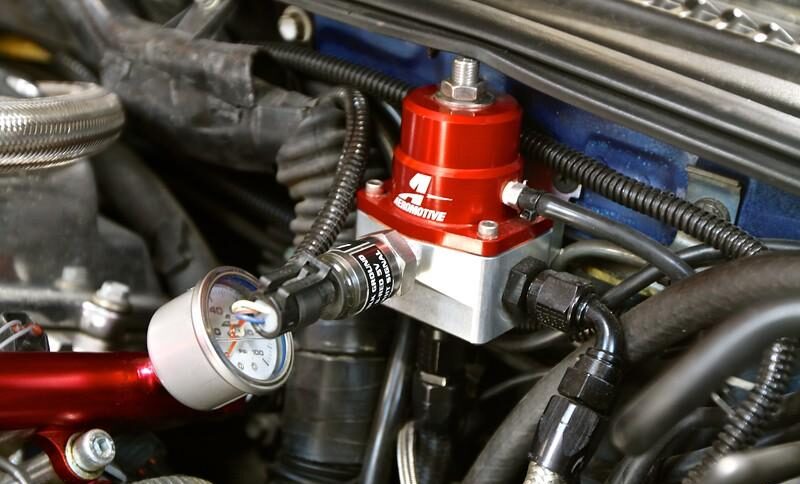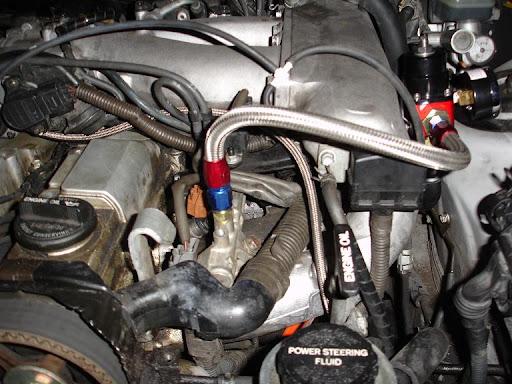The 2JZ-GTE engine, renowned for its power and reliability, demands precise fuel delivery to perform at its best. Proper fuel pressure is essential for maintaining engine performance, fuel efficiency, and overall longevity. Ensuring that your engine receives the correct fuel pressure can prevent various issues such as poor acceleration, stalling, and increased fuel consumption.
This guide will walk you through the importance of fuel pressure, the symptoms of incorrect fuel pressure, and provide a detailed, step-by-step process for testing and adjusting fuel pressure in your 2JZ-GTE engine. By following these instructions, you can keep your engine running smoothly and efficiently.
Understanding Fuel Pressure
Fuel pressure refers to the force at which fuel is delivered from the fuel tank to the engine’s injectors. It ensures that the correct amount of fuel is available for combustion at all times, which is crucial for maintaining optimal engine performance.
Components Involved:
- Fuel Pump: The component responsible for delivering fuel from the tank to the engine.
- Fuel Pressure Regulator: Maintains the correct fuel pressure by adjusting the flow of fuel.
- Fuel Injectors: Sprays fuel into the combustion chamber at precise intervals and quantities.
Optimal Pressure: Optimal fuel pressure is specific to each engine type. For the 2JZ-GTE engine, it typically ranges around 43-47 psi (pounds per square inch) at idle. Maintaining this pressure ensures efficient fuel delivery and combustion.
Symptoms of Incorrect Fuel Pressure
Symptoms:
- Poor Acceleration: The engine may hesitate or fail to respond when you press the accelerator.
- Engine Stalling: The engine may stall or shut off unexpectedly, particularly at idle or low speeds.
- Increased Fuel Consumption: The engine uses more fuel than usual, reducing fuel efficiency.
- Difficulty Starting: The engine may have trouble starting or may not start at all.
- Check Engine Light: The vehicle’s check engine light may illuminate due to fuel system issues.
Causes:
- Failing Fuel Pump: A worn-out or failing fuel pump can’t maintain proper pressure.
- Clogged Fuel Filter: A dirty or clogged fuel filter restricts fuel flow, reducing pressure.
- Faulty Fuel Pressure Regulator: A malfunctioning regulator can cause either too high or too low fuel pressure.
- Leaking Fuel Lines: Leaks in the fuel lines can lead to pressure drops.
Step-by-Step Fuel Pressure Testing Procedures
Preparation for Testing:
- Tools Needed: Fuel pressure gauge, safety goggles, gloves, rags, and the vehicle’s service manual.
- Safety First: Ensure the vehicle is on a level surface, the parking brake is engaged, and the engine is off. Wear safety goggles and gloves to protect against fuel exposure.
Connecting the Fuel Pressure Gauge:
- Locate the Fuel Pressure Test Port:
- Refer to the service manual to locate the test port, typically found on the fuel rail.
- Attach the Fuel Pressure Gauge:
- Connect the fuel pressure gauge to the test port securely, ensuring a tight seal to prevent leaks.
Measuring Fuel Pressure:
- Initial Pressure Check:
- Turn the ignition key to the “ON” position without starting the engine.
- Observe the gauge reading; it should match the manufacturer’s specifications (43-47 psi for the 2JZ-GTE engine).
- Running Pressure Check:
- Start the engine and let it idle.
- Observe the fuel pressure gauge and note any fluctuations.
- The pressure should remain steady within the specified range.
Interpreting Results:
- Normal Pressure: If the pressure is within the specified range, the fuel system is functioning correctly.
- High Pressure: Indicates a potential issue with the fuel pressure regulator.
- Low Pressure: May indicate a failing fuel pump, clogged fuel filter, or leaking fuel lines.
Adjusting Fuel Pressure
Adjusting the Fuel Pressure Regulator:
- Locate the Regulator:
- Refer to the service manual to locate the fuel pressure regulator.
- Adjustment Procedure:
- Use the adjustment screw on the regulator to change the fuel pressure.
- Turn the screw clockwise to increase pressure or counterclockwise to decrease pressure.
- Make small adjustments and recheck the pressure with the gauge until it matches the specified range.
Rechecking Pressure:
- Verification:
- After adjustments, reattach the fuel pressure gauge and verify that the pressure is within the specified range.
- Ensure there are no fuel leaks and the system operates smoothly.
Preventive Maintenance Tips
Regular Inspections:
- Schedule: Check the fuel pressure as part of your regular maintenance routine, typically every 12,000 to 15,000 miles.
- Visual Checks: Regularly inspect fuel lines, the fuel pump, and the fuel pressure regulator for signs of wear or damage.
Using Quality Parts:
- Importance: Use high-quality fuel system components to ensure reliable performance and longevity.
- Replacement: Replace worn or damaged parts promptly to maintain proper fuel pressure.
Keeping Records:
- Maintenance Log: Keep a log of all fuel pressure tests and adjustments, noting the date, mileage, and any parts replaced. This helps maintain a regular maintenance schedule and track potential issues.
Conclusion
Maintaining proper fuel pressure is vital for the performance and longevity of the 2JZ-GTE engine. Regular checks and adjustments ensure smooth engine operation, improved fuel efficiency, and reduced wear on engine components.
Implement a routine fuel pressure check and adjustment schedule to keep your engine running optimally. If you encounter any issues or need assistance, seek professional help to ensure your fuel system is correctly maintained.
Frequently Asked Questions (FAQ)
Why is fuel pressure testing important?
Fuel pressure testing is crucial because it ensures that the engine receives the correct amount of fuel for efficient combustion, which is essential for optimal performance and fuel efficiency.
How often should I test my fuel pressure?
You should test your fuel pressure every 12,000 to 15,000 miles or as recommended in the vehicle’s service manual.
What tools do I need for fuel pressure testing?
You will need a fuel pressure gauge, safety goggles, gloves, rags, and the vehicle’s service manual.
Can I perform fuel pressure testing myself, or should I go to a professional?
You can perform fuel pressure testing yourself with the right tools and knowledge. However, if you are unsure or encounter issues, it is best to seek professional help.
What are the signs that my fuel pressure needs adjustment?
Signs include poor acceleration, engine stalling, increased fuel consumption, difficulty starting, and the check engine light illuminating.

